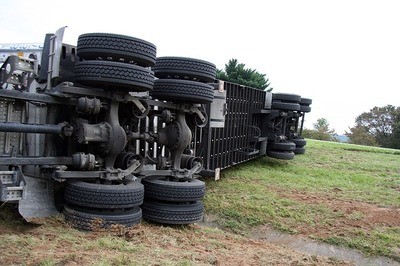 You're a professional driver and trucking is your living. The specialized CDL license you've earned is what enables you to generate your income, and CDL accidents can jeopardize your license and your livelihood.
You're a professional driver and trucking is your living. The specialized CDL license you've earned is what enables you to generate your income, and CDL accidents can jeopardize your license and your livelihood.
Avoiding preventable accidents is a key factor in earning a living through your commercial driving license. The Federal Motor Carrier Safety Administration's CSA program collects data on commercial motor carriers' safety performance by investigating accidents. Motor carrier companies and drivers with too many preventable accidents on record could have a tough time staying on the road.
As a CDL professional, you owe it to yourself and your employer to do everything possible to avoid preventable accidents. This is no monumental task; there are some basic driving techniques that can help improve your preventable accident CDL driving skills.
What Is a Preventable Accident?
A preventable accident is one in which the driver “failed to exercise every reasonable precaution to prevent it.” Sometimes, a small fender-bender can be the fault of another driver, but it could still be recognized as preventable by both drivers. If there was something reasonable that a CDL holder failed to do to prevent it, the CSA can consider the driver as having contributed to a preventable accident. If a driver, for example, parked a vehicle in a way that made it impossible for a moving vehicle to avoid slamming into it, that would be considered preventable.
Basic Science of Avoiding Preventable Accidents
Speeding, leaving the scene of an accident and driving while intoxicated are no-brainers when it comes to preventable accidents. Any one of these mess-ups is going to most likely land the truck driver and his or her CDL in some serious trouble. This is not the way professionals approach their work. Aside from the obvious dictates, there are some simple rules that you can stick to that can help you avoid the more common preventable CDL accidents.
Right-Hand Turn and Intersection Cautions
A collision while turning right at an intersection can often be considered a preventable accident because you should be well aware of your cab's blind spots. In addition to using your flashers to signal other vehicles that you're getting ready to turn, there are a number of warning signs that can be attached to your rig. A semi needs a wide-open space to make a right turn and you may need to swing wide before arriving at the intersection. You should be sure you've done all you can to alert other drivers to what you're doing.
You also need to come to a complete stop, and then wait until there's no one in the right-hand lane before attempting a turn. Your right-turn signal should be flashing for at least 100 feet before approaching the intersection. When an intersection is crowded, that flasher distance becomes 500 feet.
Some intersections can be jam-packed, but you should always come to a complete stop and give the other vehicles the right-of-way. Be on the look-out for daredevil drivers that are willing to take a chance at sneaking by you while you turn. Collisions at intersections are top contenders for preventable accidents, and CDL holders should proceed with caution at all times.
Stop and Check Before Backing Up
Preventable backing-up accidents can often be avoided by first stopping and then exiting the cab and making a thorough physical and visual check for potential hazards. Conducting a physical check of the environment is a good way to verify that there are no barriers or obstacles in your back-up path. This is an especially wise approach to take when delivering or picking-up at loading docks or getting around on unfamiliar roads and parking lots.
Be Ready To Stop at Any Time
Your ability to stop your truck smoothly depends on a variety of factors. Your individual sense of perception and reaction time, weather conditions and the braking distance all come into play. Strive to remain aware of these factors at all times.
Stopping your truck safely should be a plan-ahead action rather than slamming on your brakes. Because semi-trucks are designed with air brakes it takes longer to stop; the air takes some time to apply the required pressure. Keeping your distance from other vehicles can give you enough time and room to stop safely when you're forced to do so quickly.
Dealing with Merging Traffic
On-ramps are often the most dangerous parts of our highway system, but truckers who handle these areas with caution and safety can help keep these sections of the road safe. This objective can be tricky, however, because many motorists assume you should move to the left. Unfortunately, this maneuver creates a situation where drivers may start to pass on your right. The best bet, for the most part, is to stay in your lane but adjust your speed so there will be enough room for merging traffic, even the ones who forget to reach highway speed before merging.
Change Lanes as Little as Possible
You need to see what's happening on all sides of your truck in a wide range of situations. Being aware of other drivers that may think they can occupy some of the same space as your rig can help avoid preventable accidents. Make it a point to check your mirrors and make the best effort to see what might be approaching your blind spots before you attempt changing lanes.
Changing lanes can be one of your most dangerous road maneuvers, especially at high speeds, in bad weather or when there are overly courageous zig-zag drivers near you. Staying in the same lane as much as possible is the recommended safe driving measure, and it can be one of the best ways to avoid preventable CDL accidents.
Stay Safe on the Road
Not all accidents are preventable but by exercising caution and staying alert while behind the wheel you can protect your employer’s reputation, your CDL license and other drivers on the road.



